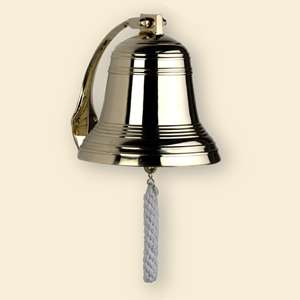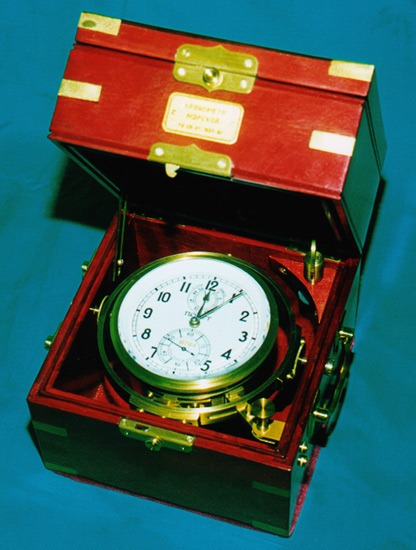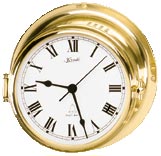|
| ||||||||||||||||||||||||||||||||||||||||||||||||||||||||
|
||||||||||||||||||||||||||||||||||||||||||||||||||||||||
|
|
||||||||||||||||||||||||||||||||||||||||||||||||||||||||
Tell Time Like A Sailor
On the right and left and below are two depictions of the clipper ship Flying Cloud, proud representative of its new class of high-speed sailing vessels when it was launched in 1851. On its maiden voyage it broke the speed record for sailing from New York to San Francisco, becoming world famous overnight. It made the journey in 89 days, cutting the previous record in two. Time flew on the Flying Cloud. about announcing time onboard ship
| ||||||||||||||||||||||||||||||||||||||||||||||||||||||||
| Watch Name |
Hours (12-hour time/24-hour time) |
| Middle Watch | Midnight to 4 a.m. /0000 - 0400 |
| Morning Watch | 4 a.m. to 8 a.m. /0400 - 0800 |
| Forenoon Watch | 8 a.m. to Noon /0800 - 1200 |
| Afternoon Watch | Noon to 4 p.m. /1200 - 1600 |
| Dog Watch | 4 p.m. to 8 p.m. /1600 - 1800 |
| First Watch | 8 p.m. to Midnight /2000 - 0000 |
the bells
Just as the day is divided into six equal four-hour watches, each watch is divided into eight equal half-hour increments.
Every half hour, the watch on duty rings a bell to announce the time of
day. The bell is rung in such a way that it represents the number of
half- hour intervals that have elapsed since the watch came on duty.
hour intervals that have elapsed since the watch came on duty.
How is this done? A series or group of claps is rung in rapid succession, forming a pattern of alternating claps and pauses. The number of claps in the group is equal to the number of half-hour intervals that have elapsed since the watch came on duty; therefore, a group's pattern is distinctive and unique for each half-hour the watch will sound.
Bells are rung starting with the first half-hour after a watch begins. Each half hour thereafter the number of claps in a group is increased by one. Therefore, the number of ship's bell claps heard when the bell is sounded is equal to the number of half-hour intervals that have elapsed since the watch began. Hearing two bell claps would mean that two half-hour intervals or one hour have elapsed since the watch went on duty.
See the table called The Bells, below, for a complete list of the times of day at which bells are rung and the pattern of bell claps and pauses for each time.
the bells
—to hear the bell pattern, click the chronometer in the column marked Ring—
This table indicates the times at which bells are heard during a 24-hour day. The times shown in the column marked Time of Day are the clock times (for a 12-hour clock) when bells are heard in the morning hours (a.m.); bells also ring in the evening hours (p.m.) at these times. For example, six bells will be rung at 3:00 a.m., 7:00 a.m., 11:00 a.m. and 3:00 p.m., 7:00 p.m., 11:00 p.m., as watches come on and go off duty.
In the column marked Total Number Number of Bells, the total number of bell claps in each row indicates the number of half-hour intervals that have elapsed since the watch went on duty.
How to tell time—the method
By now the process of translating a group of bell claps into a time of day should be obvious. It's a three-step process:
- Count the number of bell claps in the group of claps rung by the watch. Since the number of claps is equal to the number of half-hour intervals that have elapsed since the watch began, add them up to calculate the number of hours that have elapsed since the watch began. For example, if you hear 2 bell claps (2 bells), the watch has been on duty for one hour; if three bells, the watch has been on duty for one-and-one-half hours.
- Note the time that the current watch came on duty. For example, if the watch now on duty is the Morning Watch, it came on duty at 4:00 a.m.
- To come up with the time of day, add the number of hours that have
elapsed since the watch came on duty to the time the watch came on duty.
For example:
- If the the Morning Watch is now on duty, it came on duty at 4:00 a.m. If you hear two bells, one hour has elapsed since 4:00 a.m.; it must now be 5:00 a.m.
- If the Afternoon Watch is now on duty, it went on duty at 12:00 p.m.
If you hear six bells, it must now be 3-o'clock in the afternoon.

hint
How does one establish which watch is on duty when the bells ring and when it went on duty?
The name of the watch doesn't really matter for telling time. So long as you take a fix on the number of bells and the approximate time of day, you'll have all the information you need.
Sailors do it by such means as scanning the sky, looking at shadows cast by the sun, or noting that dinner is cooking or has has just been served, or similar clues . For example, if the sun is higher than 45 degrees above the horizon but still in the east, the current time must be later than 8:00 a.m. and earlier than noon.
Watches start at midnight and change every four hours. Therefore, this must be the second watch. With the sun where it is, it's too late for the midnight watch and too early for the afternoon watch. Therefore, the watch now on duty must be the second watch, the one that started at 8:00 a.m. and will quit at noon. Just add the elapsed hours rung by the bells to 8:00 a.m. and you have the time.
When it comes to telling bell time, common sense rules the day. In this example, the watch now on duty is the Forenoon Watch. But the name of the watch isn't what's important for telling time. What's important is the time the watch went on duty and the number times the bell struck.
observations
- No wonder sailors talk "bell talk" by answering in bells; they do so because they tell time by counting bell claps. When a sailor says it's six bells, for example, he means that six bells or three hours have elapsed since the current watch went on duty.
- Bell time is only accurate to the nearest half hour. The announced time is precise only while the bells are ringing. A half hour will elapse before bells ring again. Therefore, in the interval after the bells stop ringing and before they ring again, the current time is somewhere between the time when the bells last rang and one-half hour later.
- One bell never marks the start of a watch; one bell marks the first half-hour after the current watch stated.
- Claps occur in pairs when possible. Pauses between claps in a group occur after each pair.
- The odd clap in a sequence of claps is always the last one to sound. When one clap sounds after one or more pairs of claps, it signals that a single additional one half-hour interval has elapsed on the watch, except for the solitary clap that indicates the first half-hour interval.
- Eight bells marks the end of a watch.
pop quiz
Take this simple little quiz to confirm your mastery over bell time.
- Ring (click) the bell and then decipher the time: click here.
- Hint: The watch bell woke you out of a sound sleep and you're tired. It's summertime but it's dark even though there're streaks of light in the east. No one is stirring.
- What time is it?
-
Answer
- Judging by the sky, it's too late for the Middle Watch and too early for the Forenoon watch. It must be the Morning Watch.
- The bell rang 3 times. The watch has been on duty for 1-1/2 hours.
- The Morning Watch runs from 4:00 a.m. to 8:00 a.m. If the watch began at 4:00 a.m. and it's 1-1/2 hours old, the time of day must be 5:30 a.m.
- Hey! 5:30 is no fit time to be up. Go back to sleep.
more Hints
- It may help to think of the watch as ringing bells to announce the length of time it is been on duty, not to announce the time of day; then convert to the time of day.
- Remember that the number of bells rung indicates neither the current time of day nor the time the watch went on duty. The number of claps always indicates the number of half-hour intervals that have elapsed since the time of day that the watch went on duty.
modified bell ringing for the dogwatch—an historic exception that proves the rule
The dogwatch (see The Watches table, above) begins at 4:00 p.m. and ends at 8:00 p.m. It's the watch that occurs before or around diner time, when the watch may becoming drowsy or some of the off-watch crew may be taking an afternoon nap (called a dog-sleep, a light or interrupted sleep).
about two-hour dogwatches
On some ships, the dogwatch is divided into two equal two-hour watches, each of which is referred to as the dogwatch. The first of these two periods runs from 4 to 6 p.m.; the second one runs from 6 to 8 p.m. On these ships, a dogwatch might be divided into two halves as a way to make it easier for cooks to serve the evening meal and the crew to eat it. Half the crew eats during the first half; the other half eats during the second half.
How it works
If you're on a ship with a dogwatch that's divided into two halves, your ship may have altered the pattern it uses for ringing bells during the second half. If so, the bell pattern will differ from the normal pattern (shown above in the table called The Bells, above).
If the ship you're on follows this approach, you will hear dogwatch bells rung in the usual fashion during the first two hours of the dogwatch (first to the fourth half hours), as shown above in the table called the Bells and below in the table called The Bells For A Two-Part Dogwatch.
But your ship will ring dogwatch bells differently in the second half of the four-hour dogwatch period. In the second half, bells will be struck the same way as they were struck in the first half of the dogwatch, except for the fourth half-hour when the dinner service and the dogwatch both end. Then bell ringing will revert to what it is normal for the ship during off-meal hours, namely eight bells. See the table called The Bells for a Two-Part Dogwatch, below.
the History behind the two-hour dogwatch
The practice of ringing bells differently in the second half of the dogwatch originated in the British navy after an historic 1797 mutiny. After the mutiny, the bell pattern was changed so that the signal for the mutiny, which was five bells in the second dogwatch, will never again be given.
Notice how this revised scheme for ringing dogwatch bells does not produce a five-bell ring. Never again will 5-bells be struck on a British navy vessel during the dogwatch; never again will 5-bells announce the anniversary of the great 1797 British navy mutiny.
the bells For a Two-part dogwatch
| Dogwatch | Half Hour Increments | Time
of Day (Sounded p.m. only) |
Bell Pattern | Total # Bells |
| First Half | First half hour | 4:30 p.m. | 1 bell | 1 |
| Second half hour | 5:00 p.m. | 2 bells | 2 | |
| Third half hour | 5:30 p.m. | 2 bells, pause, 1 bell | 3 | |
| Fourth half hour | 6:00 p.m. | 2 bells, pause, 2 bells | 4 | |
| Second Half | First half hour | 6:30 p.m. | 1 bell | 1 |
| Second half hour | 7:00 p.m. | 2 bells | 2 | |
| Third half hour | 7:30 p.m. | 2 bells, pause, 1 bell | 3 | |
| Fourth half hour | 8:00 p.m. |
2 bells, pause, 2 bells, pause, 2 bells, pause, 2 bells |
8 |
[Coming: Bell animation. Put a number of bell images in each time a visitor clicks. Add sound of ship's bells to page and ring number of bells that's correct for each number of bells the visitor clicks. Picture of chronometer. Rang bells with clocks once they were perfected. Convert this page.
|
|
Search this web site with Electricka's Search Tool:
tap or click here
Electricka's Theme Products
Shop At Cafe Press
This web site and
its contents are copyrighted by
Decision Consulting Incorporated (DCI).
All rights reserved.
Contact Us
Print This Page
Add
This Page To Your Favorites (type <Ctrl> D)


You may reproduce this page for your personal
use or for non-commercial distribution. All copies must include this
copyright statement.
—Additional
copyright and trademark notices—


 How
the watch works—A new watch comes on duty every four hours. Rotation relieves the old
watch from fatigue and keeps the new watch on its toes. This rotation pattern repeats throughout the
24-hour period that comprises a day. Since a watch lasts four hours, there
are six watches during the day and the day is broken into six equal parts.
Three watches or twelve hours pass during the morning hours, from midnight
to noon; three watches or twelve hours pass during the evening hours, from
noon to midnight.
How
the watch works—A new watch comes on duty every four hours. Rotation relieves the old
watch from fatigue and keeps the new watch on its toes. This rotation pattern repeats throughout the
24-hour period that comprises a day. Since a watch lasts four hours, there
are six watches during the day and the day is broken into six equal parts.
Three watches or twelve hours pass during the morning hours, from midnight
to noon; three watches or twelve hours pass during the evening hours, from
noon to midnight.

